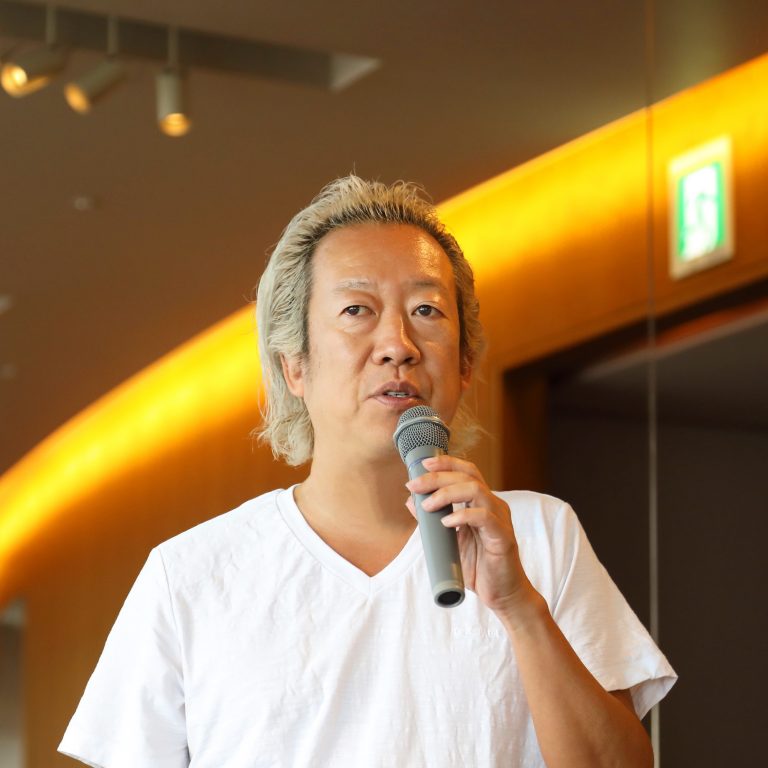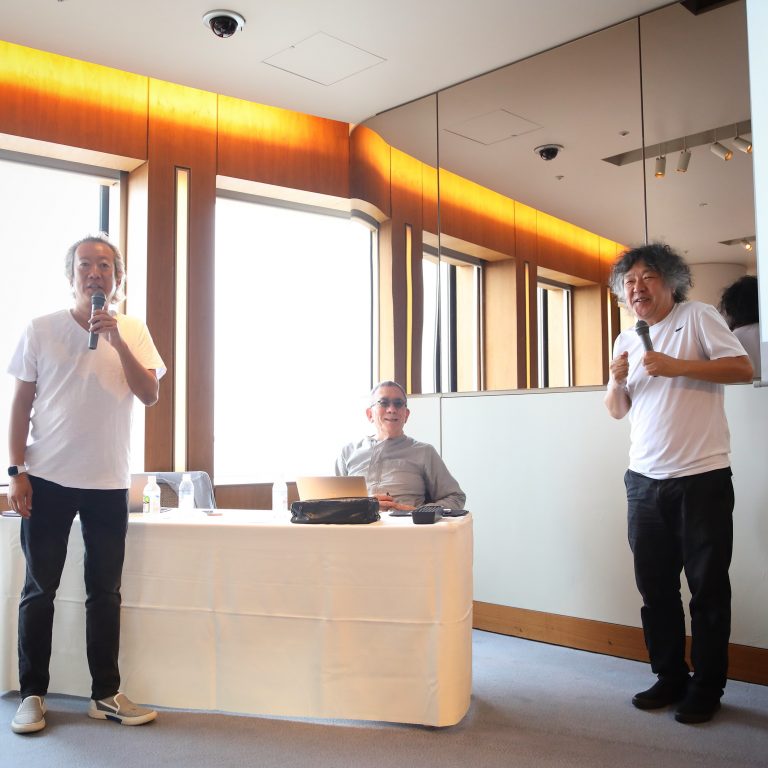The 1st AI Salon [AI will change the future of humans] (hosted by Speedy, Inc.) Summary of the lecture by Kenichiro Mogi, brain scientist
The Future of Human Beings Changed by AI – AI Salon Part 1
Keynotes Speaker Brain Scientist Kenichiro Mogi
Organized by Speedy, Inc.
Composition: Junko Io
Photo: Yukiko Echima
Dates: May 28, 2019
Location: Roppongi Hills
What is AI Salon?
This is a members-only salon brought to you by Speedy, a brand consulting company. How can companies utilize AI as a “business tool that can be used tomorrow”? We will work together every month.
1st Guest / Mr. Kenichiro Mogi
Born in Tokyo in 1962. Brain scientist. Senior researcher at Sony Computer Science Laboratories. After graduating from the University of Tokyo with a Bachelor of Science and a Master of Laws, he completed his graduate studies in physics at the University of Tokyo, where he received his Ph. After working at RIKEN and the University of Cambridge, he moved to his current position. He has been exploring the relationship between the brain and the mind with the keyword “qualia” (the subtle, unquantifiable textures that emerge in consciousness). He received the Kobayashi Hideo Prize for “Brain and Virtuality” (2004, Shinchosha) and the Kuwabara Takeo Prize for Arts and Sciences for “Now, Here to All Places” (2009, Chikuma Shobo). His most recent book is “Why the World is Enthusiastic about Japan’s Commonplace” (Kadokawa Shinsho).
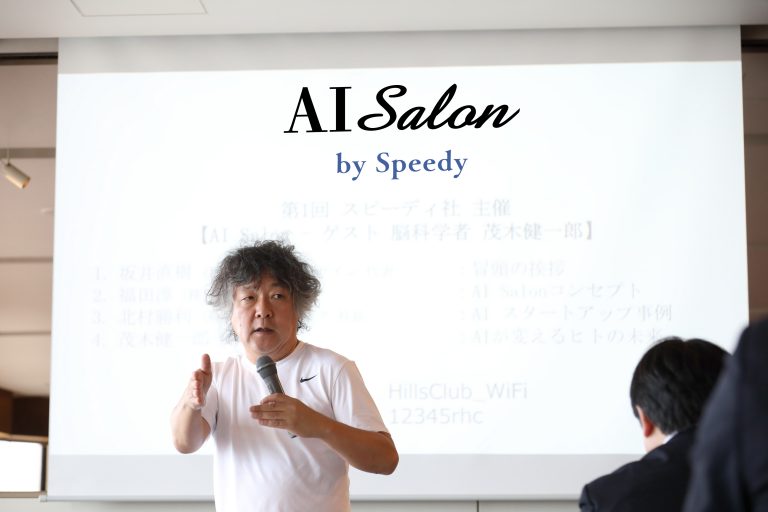
Open AI “GPT-2” Dangerous
Mr. Naoki Sakai, the chairman of Speedy, Inc. and the representative of Water Design, Inc.
I know that you are all here today because you are interested in the business applications of AI (Artificial Intelligence). However, there is one perception about this field that I would like to share with you. That is that it will become obsolete in no time. The way of innovation is completely different from what it used to be. If we do not secure recognition of this fact, we will not be able to use the best of AI in our business. Until now, Japanese-style R&D (research and development) has made us feel more grateful to famous universities or big national projects, but these are not the times we live in now.
There is a technology developed by just three Canadians in a start-up company called “Lyrebird,” and you can find videos of it by searching YouTube. The word “lyrebird” comes from a bird native to New Zealand that imitates all kinds of sounds. Inspired by the ecology of this bird, which imitates not only birds but also camera shutter clicks and electric saws, an AI-based voice synthesis system was created. The service learns human voices and generates digital voices. In other words, as long as there is voice data, it can speak all kinds of text, even if the person is not speaking, as if he or she were speaking in person. For example, President Trump can speak the text “I’m going to attack North Korea.
On the other hand, Open AI, or GPT-2, is an open innovation AI platform in which Elon Musk is also involved. Since this is Open AI, the assumption was, of course, that all results would be open. However, the release of this “GPT-2” AI was stopped because it was considered dangerous. For example, suppose I wrote an introduction on the issue of the United Kingdom’s withdrawal from the European Union (EU). Then this AI would automatically generate all the subsequent news in a plausible manner. If you write a preface to George Orwell’s novel “1984,” it will also write a plausible novel afterwards.
What immediately comes to mind with this is fake news. When I think of fake news, it is still fresh in my mind that the last U.S. presidential election was marred by a scandal involving a political consulting firm called Cambridge Analytica, which was able to look into the demographics of users on Facebook and illegally acquire personal information in order to most effectively support Trump. You were spreading the news that would make it so. Even this is easy to create such fake news using the “GPT-2” I mentioned earlier: you can create 10,000 different tailor-made fake news stories for 10,000 different people. It is possible to make Bayesian inferences based on a person’s gender, age, previous access history, and anything else you can think of, and then broadcast the news to a certain demographic, saying, “If we broadcast this kind of news to this demographic, it will probably change their attitudes.
I myself write a great deal of text on a daily basis, but I would hate to send 10,000 different texts to 10,000 people. In the first place, it is absolutely impossible for a human being to tailor the content of a text. However, AIs are free, and they never get angry no matter how much we make them work.

Understanding AI’s unique “anarchy”
Back to why the aforementioned open AI “GPT-2” is dangerous, it is a danger of quantity over quality. My friend, the critic Kazuyo Katsuma, always writes great books, but there are also anti-Amazon reviews. Ms. Katsuma. Poor Ms. Katsuma. But until now, because humans wrote the reviews, there were still only a few, but what will happen when natural language processing AI like “GPT-2” comes out? One morning, Kazuyo Katsuma looked at the Amazon reviews of her new book and saw 10,000 “one-star” reviews, which is a frightening prospect, because AI can generate large numbers of both negative and positive reviews.
This is a big deal, isn’t it? What do you think will happen? So far, we have been living under the assumption that what we see on the Internet is “human-generated text. In the future, however, there is a possibility of an overwhelming world in which one text written by a human is compared to 10,000 texts written by an AI, or “1:10,000. So, open AI is dangerous, and that is why it has been suspended from public use.
Without first understanding the anarchy of this AI community, your business use may be misguided and you may not be reaching for the best. Do you understand this feeling?
The name “Satoshi Nakamoto” is well-known as the creator of the Bitcoin principle, but the identity of this person, including whether it is his real name or not, is unknown. In the U.S., there is a place that cryopreserves deceased people on the assumption that they will be treated and brought back to life when medical care is developed in the future. One theory is that the billionaire stored there is rumored to have received a Bitcoin transfer from “Satoshi Nakamoto” himself. Another theory is that the billionaire in cryostorage is “Satoshi Nakamoto.
Well, anyway, you don’t really know what it’s about, do you? (laughs) But, look. The important thing is that the paper describing bitcoin is not a peer-reviewed paper or anything. And we don’t know who they are. But a couple of months after the blockchain paper describing bitcoin was published, Satoshi Nakamoto actually implemented the blockchain, and bitcoin appeared in the world. Unless you get a sense of this anarchy, you will never get a sense of the current research atmosphere in AI.
The reason why I emphasize this is because Japan is a country that does not understand such things. It is rare for a country where the concept of “disruptive innovation” has not penetrated society as deeply as it has. In short, people don’t understand it sensibly. I think this is the biggest problem when considering AI in Japan. So far, the bureaucrats at the Ministry of Economy, Trade and Industry (METI) have been working very hard and pouring large government funds into various projects, such as the “5th generation computer” and the “Information Age. However, such honor student-type innovations cannot compete with AI at all. Today, I would like to share this point with you.

Evaluation Functions” Key to AI Applications
To continue the story, the most important thing in AI is the “evaluation function”. This is very, very important. The evaluation function is to give feedback by assigning a score that says, “Your calculation is good/bad for this reason. In Go and Shogi, “winning is good”, so the evaluation function is clear. Following the news that AlphaZero, a chess and shogi AI developed by DeepMind, a company led by the artificial intelligence development genius Demio Hassabis, is the strongest, my friend Takafumi Horie, who is also a chess player, said, “It is stupid for a sushi chef to train for years,” and this also caused a firestorm. In the world of AI, however, it has become a reality. According to the latest talk by Mr. Hassabis, “AlphaZero,” an AI that can self-learn to play chess and even chess, has an evaluation function that, if you give it feedback that “this move of yours is good/bad,” the AI will play dozens or hundreds of games per second because it is bored. As expected, even Mr. Zenji Hanyu would get bored if he played Shogi all day long, so he would say, “Let’s go out for a bite to eat.
In other words, the CPU has become so fast that Al can easily master the kind of skill and sense of chess that Ichizo Kato spent years building up. Hassabis himself is a master chess player, but the engineer probably has no interest or love for Shogi. That’s why we only taught him the rules. An AI created by such people can reach a level that surpasses humans in just a few hours. That is what makes it possible: the evaluation function. What is an evaluation function is that “AI cannot be optimized without human beings setting the criteria for evaluation.
So, gentlemen, whether we are doing research on AI or considering its application, we cannot master AI unless we thoroughly think about this evaluation function. In the case of Shogi and Go, I mentioned that the evaluation function is clear. But what about automated driving? This is a very difficult “Pandora’s box. Suppose there are five people in the car, and if you turn the car to the right to save five people, one person will be killed. But is it really good or bad to sacrifice one person in order to save five? This is called the “trolley problem.
In other words, what are the ages of these five people, what are their genders, and do any of these people have family members or acquaintances? Are they handsome or beautiful, of the same race or a different race? The MIT Media Lab (a research institute set up within the School of Architecture and Planning at the Massachusetts Institute of Technology in the US) is conducting an online experiment to see how people behave when all such parameters are changed.
But as for the algorithm for automated driving, we have to define it by our evaluation function. What conditions should be prioritized, such as whether to prioritize the safety of the driver or to minimize the number of injuries and casualties, including the driver? This is already Pandora’s box, isn’t it? Whatever valuation function is defined, that car company will go down in flames the moment the assumptions of the valuation function are revealed. In the first place, human beings have lived in balance by not revealing the evaluation function.
It was during one of my sessions with Ms. Kazuyo Katsuma, whom I mentioned earlier. She said, “Mogi-san, it’s me. I have 10 rules for my partner. They are that he must be taller than me, he must have a higher annual income than me, and he must be …….” After listing various requirements, he said, “So, my current partner meets all of them. Kazuyo Katsuma had a checklist at the time, but people don’t have the concept of an evaluation function, or if they do, it’s not a very good one. (Laughter) There is no such thing as an evaluation function, and even if there were, it would be upsetting if someone revealed it and said, “That’s why I like you” (Laughter). AI, however, has “the problem of not being able to move forward without explicitly defining the evaluation function. What to do about this is now an extremely difficult problem.
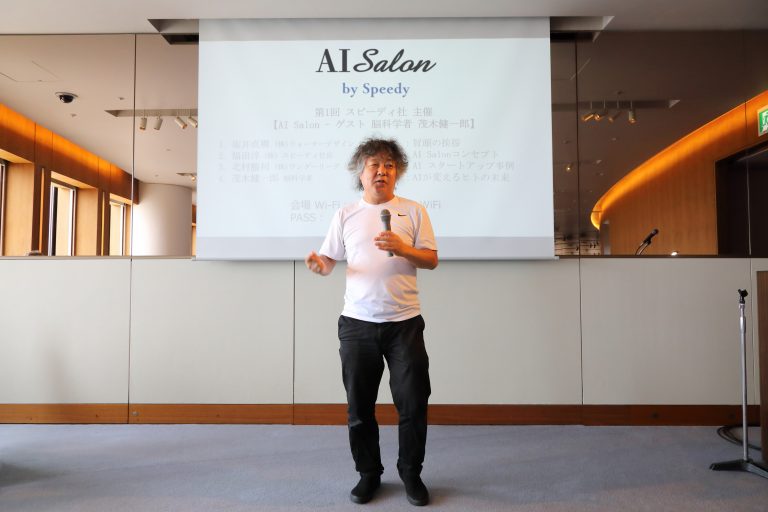
The ambiguity of the human condition.
There is room for AI.
One of the great potentials for AI application is the interview for college entrance examinations. Japan’s university entrance examinations must change now. Until now, deviation score was the deciding factor, as students were admitted in order of the highest score. Mr. Ebizo Ichikawa says to me, “Mogi-san, I have hardly ever opened a textbook to study,” but Mr. Ebizo, who has been active as a leading figure in the classical art of kabuki, has a high chance of passing the Harvard entrance examination.
Mothers all over the U.S. want to know what the admissions criteria are because they want to get their children into Harvard, but the evaluation function of Harvard’s Admissions Office is veiled so that no one can know what it is. In extreme cases, there is no such thing as a rigged admissions process. The only thing we know is that the only thing that matters is the interview. Harvard interviews are conducted by alumni, so for example, applicants who live in Tokyo will be interviewed by Harvard alumni in Tokyo. Moreover, the length of the interview is not clearly defined; it may last three hours, or it may span several days. In some cases, the interview is conducted via Skype. Harvard’s approach is the exact opposite of the standardized world of Japanese university entrance examinations, which are conducted by a panel of five judges for 15 minutes. To put it more broadly, it means “selecting people. When selecting people, what kind of evaluation function should be used? This is an area where Japanese are not good at, so I think there is room for AI in this area.
When I asked one venture capitalist (an investment fund that invests for high returns), he said, “Only one in 500 people invest. Then what is that evaluation function? He said that he himself does not know. That is, after all, the ambiguous and diverse sense of value that human beings possess. Therefore, I believe that using AI to provide a certain degree of support for this will be a very big business opportunity. Especially in the case of Japan, the AO entrance examination has been notorious as a “backdoor entrance for students with poor academic ability.” I believe that AI can provide a solution to the problem of how to scoop up atypical human personalities by defining an evaluation function.
With regard to automated driving, we expect a consensus to emerge that the evaluation function will not be revealed.
This “not revealing information” is similar to the criteria for admissions at Harvard University mentioned earlier, as well as for genetic research in medicine. I understand that GeneQuest Corporation, known for its genetic testing and analysis, does not teach about single gene diseases. In other words, they do not tell their clients about the type of genetic disease that is characterized by a certain gene that has a high probability of causing disease. On the other hand, what information they do tell their clients is the ambiguous area involving multiple genes, where diseases may be avoided or improved by improving lifestyle habits. Essentially, if you can find “this gene will always make you sick,” the quality of the information is high. But why not tell it to the person in question? This is why. We don’t tell them that, we only tell them the ambiguous parts. This is kind of an interesting story.
One big picture when looking at the world in the future is that there is an extremely sophisticated AI evaluation function system running in the background, but it doesn’t tell the whole story. But only the engineers know about it, because if they don’t, they don’t want to know about it. I think this is the kind of era we are entering.
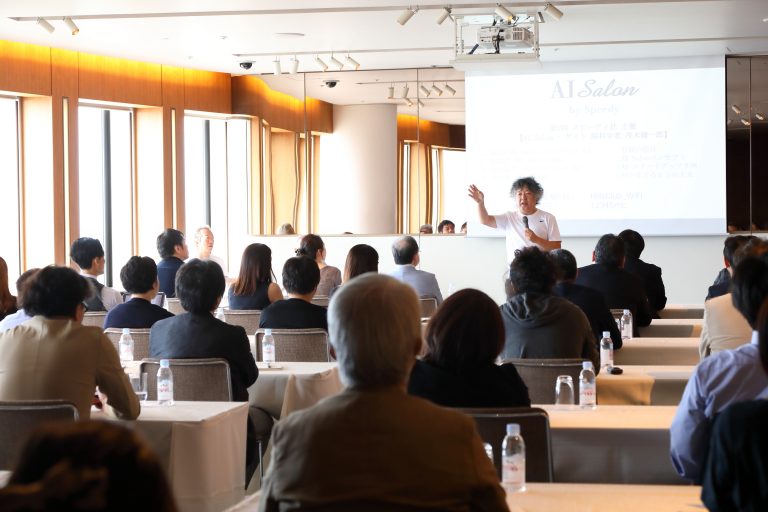
Required in the AI Era
The leader is “Disruptor.”
In 1904, Charles Spearman, an English psychologist, came up with the term “g-factor”, “g-factor”, “g-factor”, and “g-factor”. published a factor analysis paper called “Factor. The “g-factor” was a factor analysis of the “g” in “general” to explain the so-called “g-factor” of being on the ground, such as good grades in a subject on average. From this point on, the general level of intelligence came to be referred to, and from there IQ also emerged.
What we have learned from modern brain science imaging is that this “g-factor” is correlated with the circuitry of resource management in the frontal lobes, if you will. It is now known that the “g-factor” is related to the extent to which the circuits of the brain can be mobilized for the task at hand. In other words, people with so-called high IQ or grounded intelligence are said to be equal to those with high “g-factor.
But here’s the interesting part again: Then there is a general rule that “people with high g-factor” are not necessarily socially successful.
For example, you have someone who had the best brain ever in the world of chess. However, he never became a world champion. But by all accounts, he was the most amazing. But the reason why he never became the world champion is because he was too smart to concentrate only on chess and did many other things. He went to Oxford and got a degree in mathematics. He would do all kinds of things when he should have just played chess. In other words, intelligence has that aspect.
This is a very interesting issue. In other words, it is connected to the evaluation function I have been talking about since a while ago. Winning at chess and shogi is one evaluation function. Nowadays, AI has become so strong that no one can beat it. Then, the deviation from the evaluation function can be said to be human-like. Like a world chess champion, he should have concentrated only on chess, but instead he does mathematics, writes various books, and so on.
In Japan, he is like Mr. Yoro Mengji. That person is also an anatomist, an amazing insect collector, does brain stuff, and writes. President Trump is also a bit strange. He may be a smart person, but there is a sense that he is “messing around. After the resignation of British Prime Minister Theresa May, the next prime minister, Boris Johnson, is also a very smart person, but I don’t really understand what he is saying (laughs).
I think Socrates of ancient Greece did the same, i.e., there is a paradox in intelligence that “those who are too smart become maladjusted. If we think about this carefully, I think we can gradually see what human beings living in the AI age should do.
So many disruptors (creative disruptors of the digital age) are now becoming leaders. Rather than someone who is always trying to do things in a “small and forward” way, someone who is a disruptor, but someone who might be able to get things moving. When I think about the era in which such people become leaders, I can say that the infrastructure is now in place in the background. We have the Internet and a proper reservation system for airplanes and trains. In this sense, because the social infrastructure is in place, society is relatively safe even if the leaders talk nonsense. We call this the “local minimum,” and I think we are in an era that requires leaders who can disrupt and move things around in a flash in order to get out of the micro-optimistic situation. This is also true for managers like you. I think that it is better for leaders to be disruptive to some extent in this day and age.
Anyway, I think it’s time to share that the essence of AI has an “evaluation function” and that its optimization is now underway in various forms. And intelligence does not necessarily mean adaptation. Being highly intelligent is, perhaps, dangerous. That’s why people have always said that genius is a fine line between radicalism and radicalism.
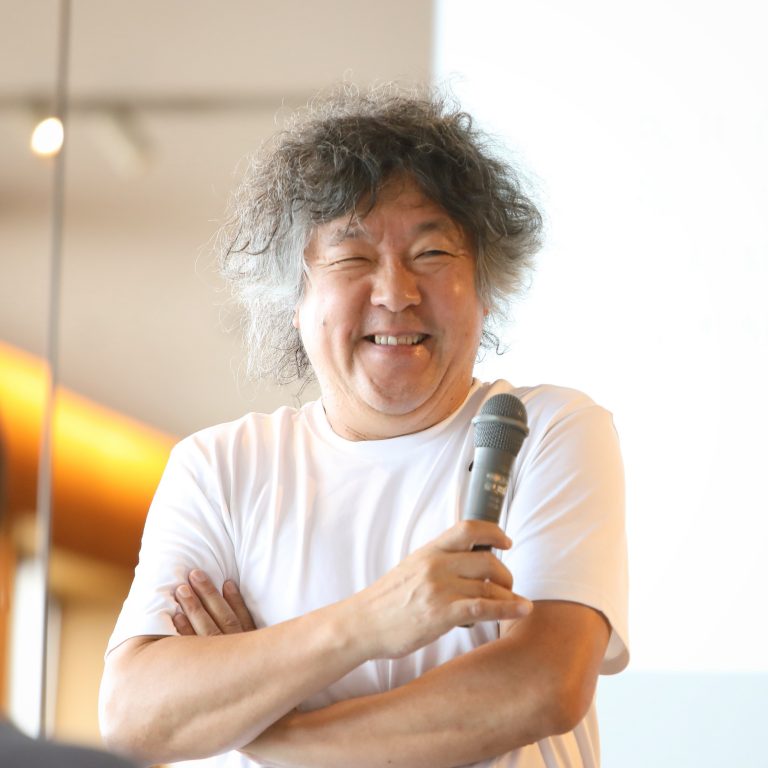
Not technology.
Counter with Japanese culture and spirit.
I would also like to talk about what kind of AI strategy Japan should adopt in the future. After all, this is Japan and we are in Roppongi, so I would like to think about it with you all, but to be honest, I think it will be difficult. It is not possible to bring the best and brightest AI researchers and centers in the world to Japan in a competitive manner anytime soon. For example, nuclear weapons use centrifuges to enrich uranium, so you can tell that they are making nuclear weapons. AI research, however, we have no idea where or who is doing what. Another point about AI is that the most outstanding research results can spread around the world in no time.
So AI is now something of an arms race. The most intense arms race is taking place in the financial markets, right? Whether investing in stocks or foreign exchange, the best time-series data analysis and forecasting models can make huge profits if they outperform the market by as little as 0.1 percent. When it comes to the arms race, my perception is that there is almost no room for the Japanese. The U.S., of course, but also China, right? You all know that China is doing tremendous things. The world’s most advanced AI technology is advancing in ways that we can no longer imagine.
For example, “Crisper Cas9”, which combines gene-editing technology and AI to create new organisms. Future research trends in such fields are completely unpredictable. That is why I recommend that you at least try to get the latest AI information in English.
Back to the topic, then, is there no hope for Japan? And it seems unlikely that we will be able to win the hard part of AI, but I think it is quite interesting that Mr. Yutaka Matsuo, a researcher of AI at the University of Tokyo, said, “Japanese people are very dexterous. What is actually lacking in AI today is this dexterity. In fact, what is lacking in AI today is this dexterity, which we professionally call “extensibility.” Rather than the main task of information processing, we can imagine sushi robots, tree pruning robots, nursing care robots, and so on. The same is true of cooking robots, which may change the concept of cooking. It may be possible to develop some revolutionary cooking method that is different from the conventional cooking done only by human hands. In fact, I think Japan can still do well in this area. One of Matsuo’s predictions is that Japan should invest more resources in this area.
Two years ago, I wrote a book titled ” IKIGAI: Secrets to a Long and Happy Life Only for Japanese ” (Shinchosha).
and it has now been translated into 29 languages in 31 countries. In the book, I wrote about the “7 Minute Miracle,” an initiative to clean the entire Shinkansen bullet train in 7 minutes, which is featured in a textbook by the Harvard Business School. Japan places great importance on the spiritual value of cleaning in this way. The other day, when Mr. Trump visited Japan and watched the sumo tournament, he was also cleaning the whole time. The Japanese cultural quality of not having hierarchical relationships among people and working together with others is now attracting worldwide attention.
So, I think something very interesting may be possible when AI is combined with this area. The Manyoshu, which is the origin of the word “2025,” is said to be a collection of poems in beautiful harmony, and there is no other collection of poems in the world in which everyone from unknown farmers and defenders to aristocrats and emperors have contributed poems. I think there must be something we can do in this area, even if Japan tries to compete with the world in the best part of the AI engine. Therefore, it is important to Japan should make the most of its advantages. Don’t you think so?
For example, kaiseki cuisine, for example, has a worldwide reputation as the highest quality cuisine. It is truly diversity, isn’t it? The dishes are diverse, and the ingredients are seasonal. Kenichiro Nishi of Kyo-Aji, a kappo restaurant in Shinbashi, says, “Mogi-san, Japanese cuisine is seasonal. The best food is in season when it is at its lowest price. Japanese cuisine is about subtraction. Cooking is about subtracting the best of the ingredients. It is amazing, isn’t it? French cuisine is an artist, right? That’s why chefs use natural ingredients to make their dishes. But Japanese cuisine is about subtraction. It is amazing, isn’t it? So, there is something great about this country. I want to do something about it.
There are many things happening in AI today that are 10, 100, or even 1,000 times more important than what I have talked about today, and I could go on and on. But I think this AI Salon, where people from different industries gather, is very good. When people who don’t seem to be serious AI geeks connect with AI, I think it will be what Steve Jobs called “connecting the dots”. So, I think it would be good to explore the connection between AI and the culture that enriches people, which is different from those who are serious AI geeks.
Thank you for your attention today.
(End)
